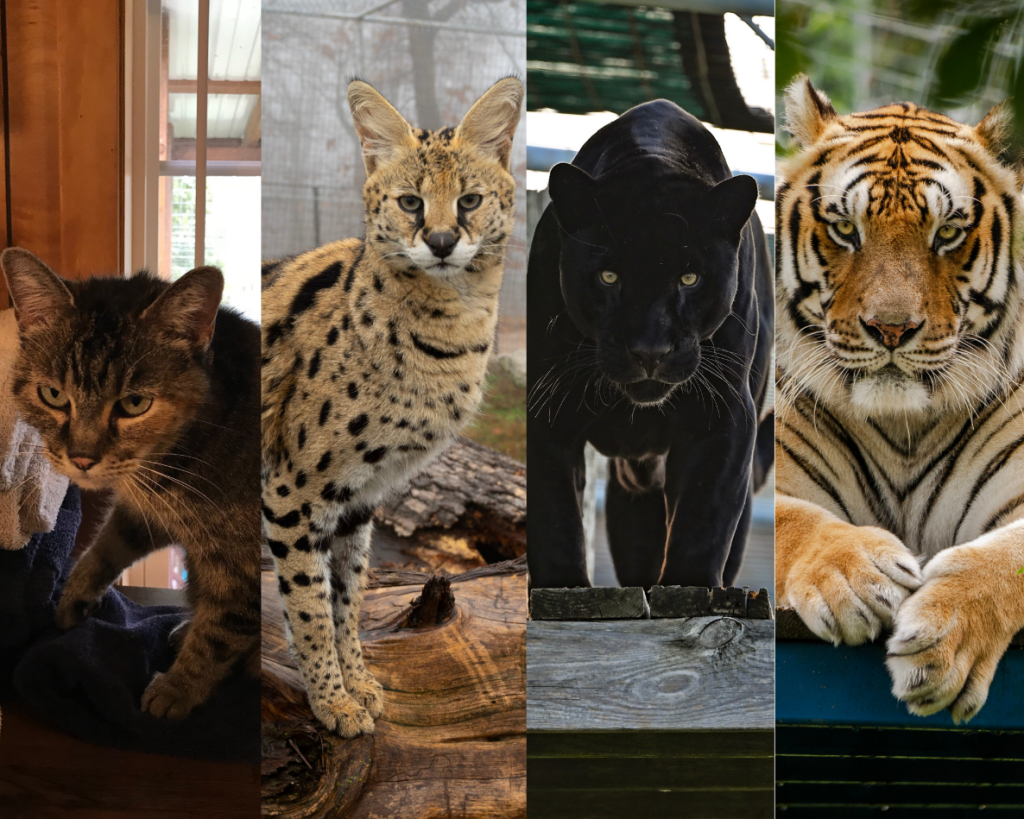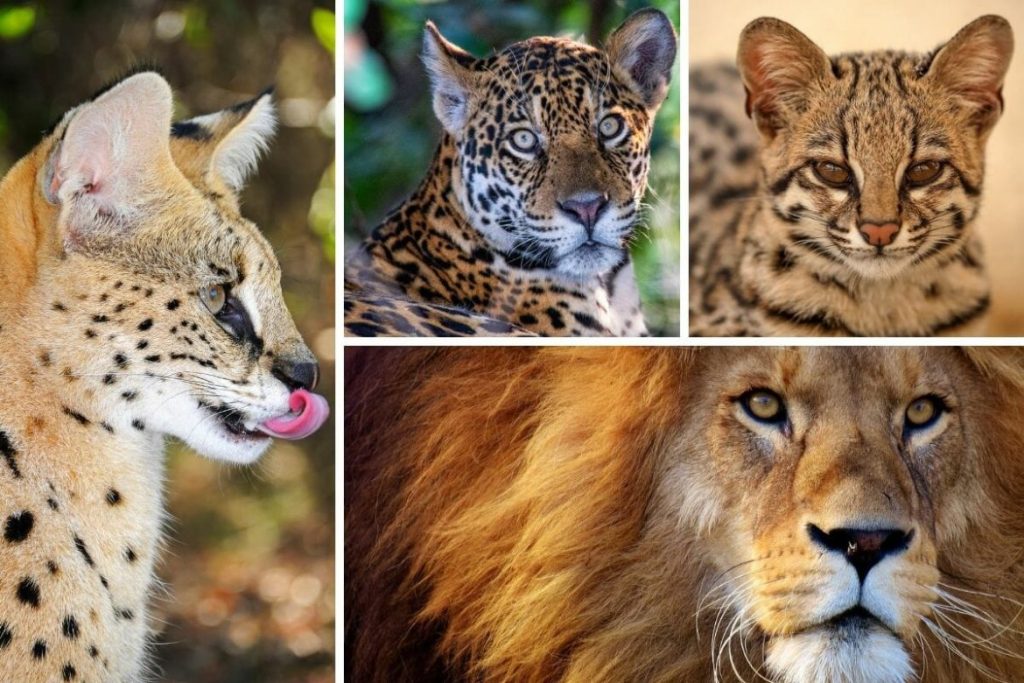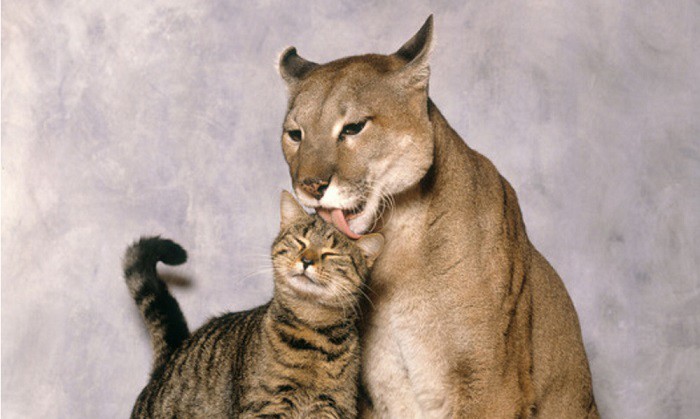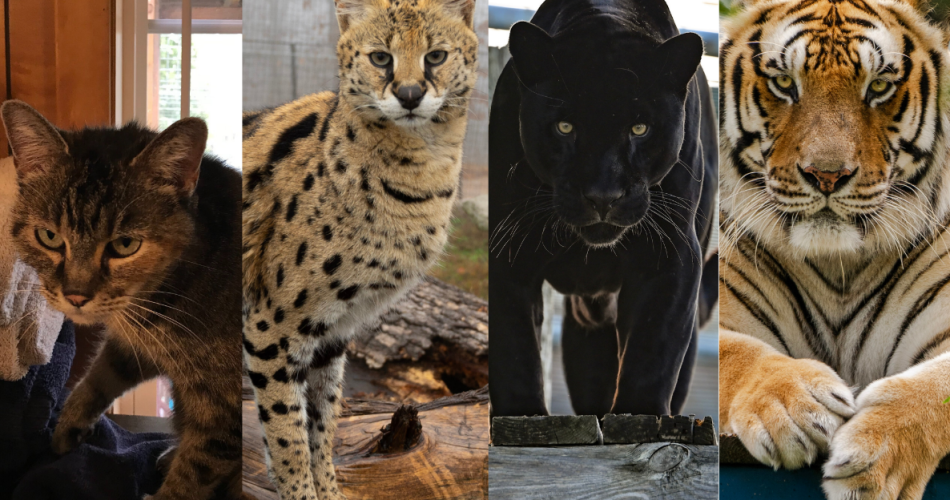Have you ever looked at your domestic cat and thought they might be a miniature lion or tiger? You’re not far off! Domestic cats (Felis catus) share a fascinating connection with big cats like lions, tigers, leopards, and cheetahs. Though they differ greatly in size, these creatures share common ancestry, behaviors, and even genetic traits. In this article, we’ll dive into how domestic cats are related to big cats, exploring their evolutionary links and shared characteristics, and why those big, round eyes staring back at you might hold a bit of the wild within.

A Shared Evolutionary Tree
The story of cats began millions of years ago, with a common ancestor that eventually branched into the domestic cats we know today and the larger, more imposing big cats. Domestic cats belong to the Felidae family, which is divided into two main subfamilies: Pantherinae (big cats like lions, tigers, and leopards) and Felinae (smaller cats like cheetahs, lynxes, and house cats).
While domestic cats are part of the Felinae subfamily, genetic studies reveal that all modern cats descended from a shared ancestor around 10-15 million years ago. The domestic cat’s more direct lineage is traced back to wildcats (Felis silvestris), specifically African wildcats, first domesticated in the Middle East roughly 9,000 years ago. This makes your pet kitty a distant cousin of those majestic big cats roaming the African savannahs or dense jungles.
Striking Physical Similarities
At first glance, it might seem like the physical differences between domestic cats and big cats outweigh their similarities. However, look closely, and you’ll notice some remarkable resemblances. Both share features such as retractable claws, sharp teeth, and powerful, muscular bodies designed for hunting. Even the way domestic cats stalk their toys mimics how big cats hunt in the wild.
Their eyes are another clue to their connection. Both domestic and big cats have slit-shaped pupils, which allow them to see in dim light. This adaptation helps nocturnal hunters thrive in low-light conditions. The stealthy movements of a lion or tiger on the prowl are mirrored in your cat’s silent padding around the house.
Behavioral Connections
The behaviors of domestic cats often echo those of their big cat relatives. Have you ever noticed your cat kneading a blanket or pouncing on a moving object? These actions stem from instinctual behaviors inherited from their wild ancestors. Kneading, for example, is thought to mimic the motion of young wild cats stimulating their mother’s milk flow. Meanwhile, the pounce is a scaled-down version of the hunting techniques big cats use to catch prey.

Big cats and domestic cats also share a territorial nature. They both mark their space, though your cat might use scent glands on their face and paws rather than roaring to assert dominance. Play behaviors in domestic cats are more than just entertainment; they mimic the hunting skills their wild relatives rely on for survival.
Communication and Social Structures
While domestic cats and big cats communicate differently, their methods are deeply rooted in their shared ancestry. Big cats like lions roar to communicate across vast distances, but domestic cats, lacking the specialized larynx to roar, rely on a symphony of meows, purrs, and chirps. Interestingly, house cats developed their meowing behavior to communicate specifically with humans, showcasing their adaptability.
Social structures also highlight the differences and connections between domestic and big cats. Lions live in pride, demonstrating a level of social organization not seen in most other cat species. On the other hand, domestic cats, much like solitary tigers, tend to be more independent. However, under the right circumstances—such as in multi-cat households—domestic cats can display social bonds that echo the cooperative behaviors seen in big cat species.

Genetics: The Key to Their Relationship
The genetic overlap between domestic and big cats is striking. Studies have shown that around 95-96% of domestic cat DNA is shared with tigers. This genetic similarity not only explains their shared traits but also reinforces their evolutionary link. Specific genes related to hunting, sensory perception, and coat patterns have remained remarkably consistent across the Felidae family, further connecting domestic and big cats.
Many of the diseases that affect domestic cats also occur in big cats. From feline immunodeficiency virus (FIV) to dental issues, the shared genetic makeup means that the health challenges faced by house cats and big cats are often surprisingly similar.
A Wild Soul in a Tiny Body
Though domesticated over thousands of years, cats have retained a wild streak that links them to their big cat ancestors. From their sharp reflexes to their playful yet predatory instincts, domestic cats are a miniature representation of the wild. It’s this very connection that makes them such fascinating and enigmatic companions.
Next time you see your cat crouched and ready to pounce on a toy, or lounging in the sunlight with regal poise, take a moment to appreciate the wild ancestry behind those familiar behaviors. Your cuddly, whiskered friend may live indoors, but deep down, they’re a tiny tiger, a pocket-sized panther, or a miniature lion, carrying with them the legacy of their majestic relatives.
